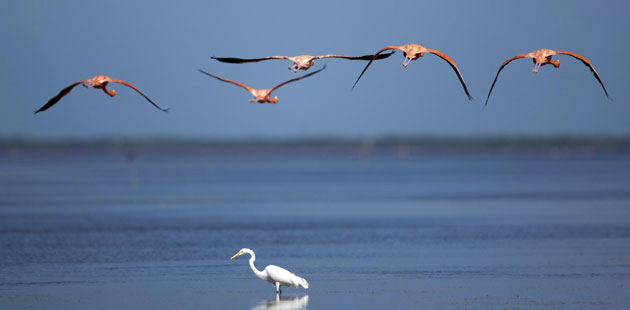Pandas to take a walk on the wild side
Updated: 2011-12-22 08:38
By Cang Wei (China Daily)
|
|||||||||
|
Xing Ya playfully jumps on Xing Rong to vie for a piece of apple at the Chengdu Panda Research Base in Sichuan province on Wednesday. The twin sisters will be among the first group to be freed under a program releasing them back to the wild. [She Yi / for China Daily] |
|
|
BEIJING - In the movie Kung Fu Panda, once-clumsy and lazy Panda Po overcomes many challenges to become a master.
Now Po's real-life prototype, Gong Zai, will also embark on an adventure for a less lofty but more essential goal - to survive.
Three-year-old Gong Zai is among a group of pandas to be returned to the wilderness by the Chengdu Panda Research Base in Sichuan province. The program attempts to return pandas to their natural habitat.
Six pandas from 108 raised in the base will be released into a controlled wilderness, known as Chengdu Panda Valley, on Jan 11. There they will receive training for the wild before being released to fend for themselves in the wilderness, according to the Chengdu base.
The group includes four females and two males, aged between 2 and 4, an age range equivalent to human teenagers. This age group is more likely to survive the rigors of the wild, according to experts at the base, China's largest.
Basketball superstar Yao Ming will attend a ceremony marking the release of the pandas to the 133-hectare valley, which can accommodate 30 to 40 giant pandas. About 50 to 100 red pandas, also an endangered species, will live there too.
Experts have spent a year examining and selecting the pandas based on age, health and genetics.
"The program is part of a 50-year plan to return the endangered species to their natural habitat," Zhang Zhihe, director of the base, said.
"It helps boost the wild panda population and improve genetic diversity," Zhang said. "The pressure of raising captive pandas will also be alleviated."
China now has 333 captive pandas. Because of the population density there is a growing risk of infection.
Thirty to 40 pandas will follow the first six before the program is gradually extended to all the pandas living in the Chengdu base, which plans to increase the number of pandas to 120 to 150 in 10 years.
"The rehabilitation is to let pandas in captivity adapt to the wild," said Zhang Shanning, head of the giant panda protection division of the State Forestry Administration. "It is crucial to ensure pandas master the necessary skills to survive the wilderness."
The first six pandas will spend increasingly less time with humans, including their breeder, before their release and will feed on bamboo instead of dietary supplements, according to the Chengdu base.
Experts will monitor the released pandas by using the Global Positioning System. Their excrement will be tracked and manmade dens in the valley can also help experts monitor them.
"China has released some pandas to the wild or half-wild environment, but most of them either died or returned to captivity," Qi Dunwu, a researcher from the panda base, said.
China has spent more than 50 years boosting the giant panda population since a sick panda was found in Majiagou Valley, Chengdu, in 1953.
"We will spend the next 50 years helping them return to the wilderness," Zhang Zhihe from the Chengdu base said.
He added that only after the pandas regain the ability to survive in the wild will they be released.
However, he admitted that the rehabilitation of pandas will be a long process. "It may take several generations of pandas." The average life span of a panda is 25 years.
China Daily













